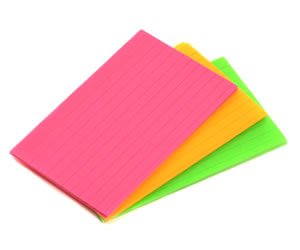Last Updated on June 26, 2022 by Laura Turner
We all want to train to become the best clinicians we can be, but education in the health professions is often like drinking from a firehose. Worse yet, most of us haven’t learned how to learn – how to effectively synthesize and retain the knowledge for the long term, both to do well on board exams and to have that knowledge available to inform our clinical practice.When we came into medical school, one of the most common pieces of advice we’d get from upperclassmen was “don’t worry about remembering this; you’ll forget it all by rotations and you’ll have to relearn it anyway.” What a depressing thought – but it’s true! By the time they arrive in medical school, most students have forgotten the majority of what they learned in college courses. Students routinely need to re-learn massive amounts of forgotten information before taking their board exams, and residents eventually forget much of what they learned in medical school outside their specialty. All this translates into vast amounts of time wasted.
But what if there was a better way to learn – one that would enable you to retain information for longer, with less investment of time, than how everyone else is doing it? In fact there is one, and it’s called spaced repetition.
Over a hundred years ago, a German psychologist, Hermann Ebbinghaus, used careful experiments to determine how learning and forgetting works. From these experiments he described a ‘forgetting curve’ in which “large amounts of forgetting occur quickly, followed by a more slow and steady decline in retention.” When you learn something, you start forgetting almost immediately. Within 20 minutes of learning some new information, you can only recall about 60% of the information they just learned. By 9 hours, retention is less than 40%, and 20% by 10 days. {Stahl:2010vz}
These results led to another key observation: the temporal relationship of studying matters. “Learning events that are repeated over time result in more efficient learning and greater retention compared to exposure to a single bolus of material.”{Stahl:2010vz}, a psychological finding termed the “spacing effect.” A recent article remarked that “The spacing effect is arguably the most replicable and robust finding from experimental psychology. Hundreds of articles, including a number of reviews and meta-analyses have found a spacing effect in a wide variety of memory tasks.” {Vlach:2012un}. Spaced repetition, a technique in which students review material according to a schedule determined by the spacing effect, has been found to be effective in numerous educational contexts, including in medical student and resident education.
The catch, however, is that the spacing effect requires patience and diligence. And many students have gotten quite far in our academic careers by doing the exactly the opposite, through cramming and “hit and run” studying. Why is that? Well, the simple truth is that massed learning, more commonly known as cramming, does work in the short term. You can load up your memory with information and some of it will stay there for a time. But as anyone who has ever crammed for a test can confirm, the gains are merely temporary. For anything longer-lasting, spaced repetition is the way to go.
Okay, you’re sold. How do you harness the power of spaced repetition for yourself? Fortunately, getting started is quite straightforward. Many med students, on their own initiative, now use free, open-source flashcard apps, such as Anki and Mnemnosyne in their studies. These programs that use an algorithm to exploit the spacing effect and optimally schedule their reviews of class material; ideally, it would prompt students to review a fact as soon as they were in immediate danger of forgetting it. Students have been able to use these tools for all aspects of medical learning, from biochemistry to clinical guidelines. There is also fertile ground for student collaboration to create shared resources (such as standard flashcard “decks”) to pool their learning efforts.
The power of modern medicine is in large part the result of an explosion of our understanding of the human body. As a result, students will have to continue to grapple with how to learn the ever-increasing amounts of information it takes to be an excellent clinician. But spaced repetition gives us an opportunity to learn more effectively, improve board performance, and become better-informed doctors. As more students understand the tradeoffs between spaced studying and cramming, they can make more informed decisions about how they want to navigate learning in medical school.
Peter Wei is a radiology resident at UT Houston; Alex Chamessian is a MD/PhD student at Duke. They are authors of Learning Medicine: An Evidence-Based Guide.

